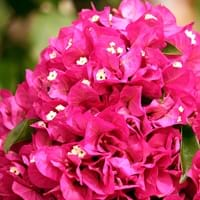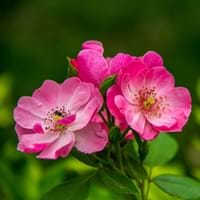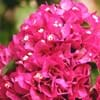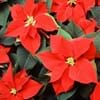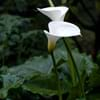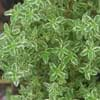Life Span
Perennial
Perennial
Type
Shrub
Flowering Plants
Origin
Hybrid origin
Europe, India, Northwestern Africa, United States, Western Asia
Types
Brasilensis, Easter Parade, Formosa, Rosenka (Orange), James Walker, Jubilee Showlady, Barbara Karst, Elizabeth Angus
Not Available
Number of Varieties
Not Available
Habitat
Rainforest, Tropical rainforest
disturbed sites, Roadsides, stream banks, Woods
USDA Hardiness Zone
9-11
Not Available
AHS Heat Zone
12-11
Not Available
Sunset Zone
22, 23, 24
Not Available
Habit
Cushion/Mound-forming
Upright/Erect
Flower Color
Gold, Magenta
Lavender, Light Pink, Pink, Purple, White
Flower Color Modifier
Not Available
Bicolor
Fruit Color
Brown, Green
Non Fruiting Plant
Leaf Color in Spring
Dark Green
Green, Gray Green, Dark Green
Leaf Color in Summer
Dark Green
Green
Leaf Color in Fall
Dark Green
Green, Gray Green, Dark Green
Leaf Color in Winter
Dark Green
Green, Dark Green
Leaf Shape
Tubular
Pinnate
Plant Season
Spring, Summer, Fall, Winter
Spring, Summer
Sunlight
Full Sun
Partial shade, Partial Sun
Type of Soil
Clay, Loam, Sand
Clay, Loam
The pH of Soil
Acidic, Neutral, Alkaline
Alkaline
Soil Drainage
Well drained
Well drained
Bloom Time
Indeterminate
Spring, Summer
Where to Plant?
Ground
Container, Ground, Pot
How to Plant?
Grafting, Stem Planting, Transplanting
Seedlings, Stem Planting
Plant Maintenance
Medium
Medium
Watering Requirements
Medium
Keep the ground moist but not water-logged
In Summer
Lots of watering
Lots of watering
In Spring
Moderate
Moderate
In Winter
Average Water
Average Water
Soil pH
Acidic, Neutral, Alkaline
Alkaline
Soil Type
Clay, Loam, Sand
Clay, Loam
Soil Drainage Capacity
Well drained
Well drained
Sun Exposure
Full Sun
Partial shade, Partial Sun
Pruning
Cut or pinch the stems, Prune for shortening long shoots, Prune if you want to improve plant shape, Prune in the late winter or spring, Prune prior to new growth, Prune to control growth, Remove dead or diseased plant parts
cut main flower spike, Remove dead branches, Remove dead or diseased plant parts
Fertilizers
All-Purpose Liquid Fertilizer
Apply 10-10-10 amount, as it is a flowering plant, use high phosphorous content fertilizer
Pests and Diseases
Aphids, Leaf spot, Mealybugs, Red spider mite, Root rot, Whiteflies
Grasshoppers
Plant Tolerance
Drought
Drought, Wet Site
Flower Petal Number
Single
Single
Foliage Texture
Medium
Medium
Foliage Sheen
Matte
Matte
Attracts
Hummingbirds
Birds, Small mammals
Allergy
Itchiness, Skin rash
Constipation, Diarrhea, Headache, Heartburn, Nausea, Pain and fatigue, Stomach pain, Vomiting
Aesthetic Uses
Showy Purposes, Used for decorating walls, fences, gates, hedges, etc.
Bonsai, Bouquets, Cottage Garden, Showy Purposes
Beauty Benefits
Not Available
Good for skin, Skin Problems
Environmental Uses
Air purification
Air purification, Food for birds
Medicinal Uses
Not Available
Astringent, Diuretic, Laxative, Vitamin C
Part of Plant Used
Whole plant
Flowers, Rose Hip
Other Uses
Showy Purposes
Making Perfumes, Used as Ornamental plant, Used for its medicinal properties
Used As Indoor Plant
No
Yes
Used As Outdoor Plant
Yes
Yes
Garden Design
Container, Foundation, Groundcover, Hedges, Mixed Border, Rock Garden, Wall, Tropical
Feature Plant, Mixed Border
Botanical Name
BOUGAINVILLEA 'Helen Johnson'
Rosa Arkansana
Common Name
Bougainvillea
Prairie Rose, Wild Prairie Rose
In Hindi
Bougainvillea
Rosa arkansana
In German
Bougainvillea
Rosa arkansana
In French
Bougainvilliers
Rosa arkansana
In Spanish
Bougainvillea
Rosa arkansana
In Greek
Bougainvillea
Rosa arkansana
In Portuguese
Bougainvillea
Rosa arkansana
In Polish
Bugenwilli
Rosa arkansana
In Latin
Bougainvillea
Rosa arkansana
Phylum
Spermatophyta
Magnoliophyta
Class
Dicotyledonae
Magnoliopsida
Order
Caryophyllales
Rosales
Family
Nyctaginaceae
Rosaceae
Clade
Angiosperms, Core eudicots, Eudicots
Angiosperms, Eudicots, Rosids
Tribe
Not Available
Not Available
Subfamily
Not Available
Not Available
Number of Species
Not Available
Season and Care of Bougainvillea and Prairie Wild Rose
Season and care of Bougainvillea and Prairie Wild Rose is important to know. While considering everything about Bougainvillea and Prairie Wild Rose Care, growing season is an essential factor. Bougainvillea season is Spring, Summer, Fall and Winter and Prairie Wild Rose season is Spring, Summer, Fall and Winter. The type of soil for Bougainvillea is Clay, Loam, Sand and for Prairie Wild Rose is Clay, Loam while the PH of soil for Bougainvillea is Acidic, Neutral, Alkaline and for Prairie Wild Rose is Alkaline.
Bougainvillea and Prairie Wild Rose Physical Information
Bougainvillea and Prairie Wild Rose physical information is very important for comparison. Bougainvillea height is 76.20 cm and width 910.00 cm whereas Prairie Wild Rose height is 300.00 cm and width 200.00 cm. The color specification of Bougainvillea and Prairie Wild Rose are as follows:
Bougainvillea flower color: Gold and Magenta
Bougainvillea leaf color: Dark Green
Prairie Wild Rose flower color: Lavender, Light Pink, Pink, Purple and White
- Prairie Wild Rose leaf color: Green, Gray Green and Dark Green
Care of Bougainvillea and Prairie Wild Rose
Care of Bougainvillea and Prairie Wild Rose include pruning, fertilizers, watering etc. Bougainvillea pruning is done Cut or pinch the stems, Prune for shortening long shoots, Prune if you want to improve plant shape, Prune in the late winter or spring, Prune prior to new growth, Prune to control growth and Remove dead or diseased plant parts and Prairie Wild Rose pruning is done cut main flower spike, Remove dead branches and Remove dead or diseased plant parts. In summer Bougainvillea needs Lots of watering and in winter, it needs Average Water. Whereas, in summer Prairie Wild Rose needs Lots of watering and in winter, it needs Average Water.
